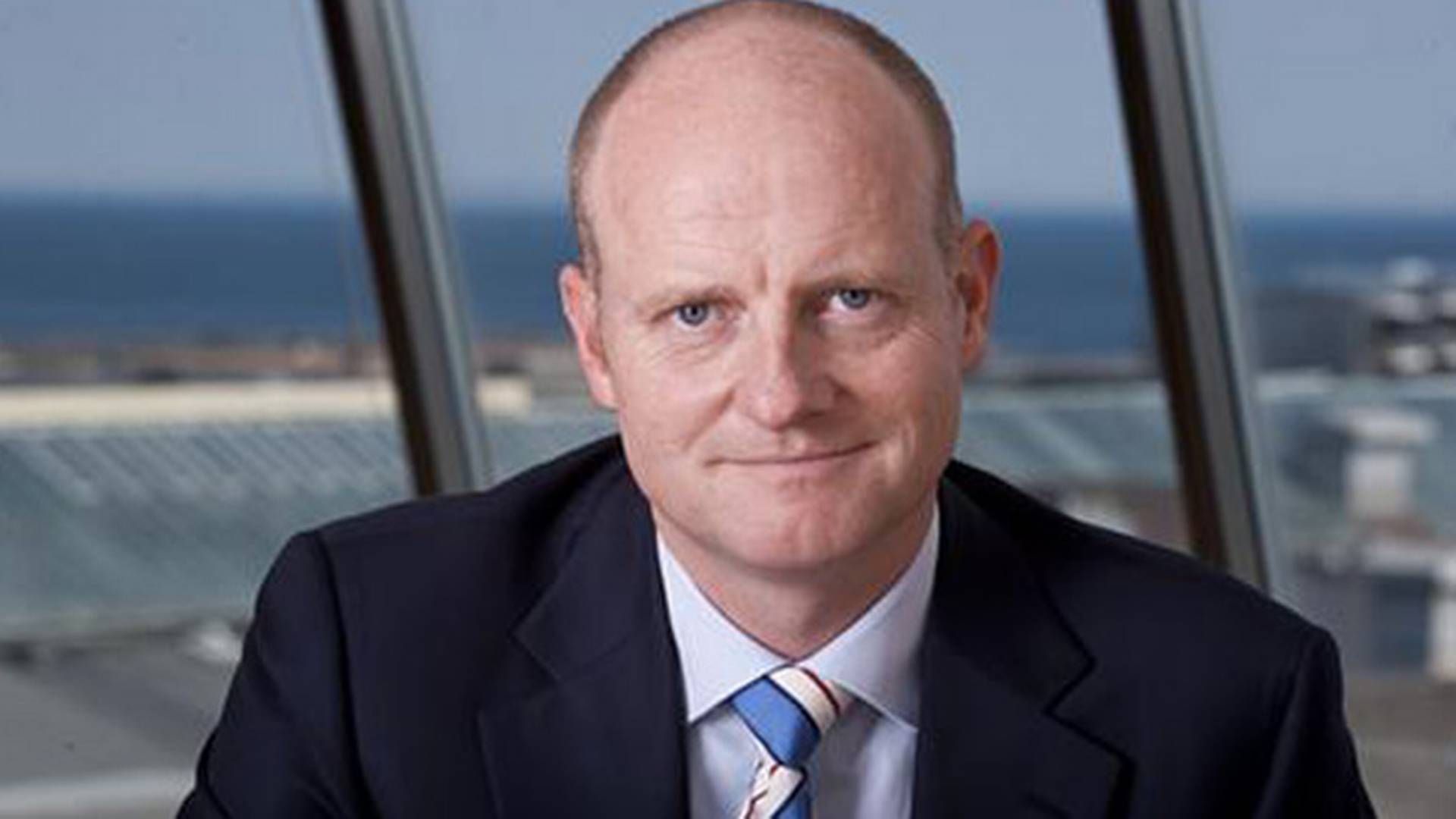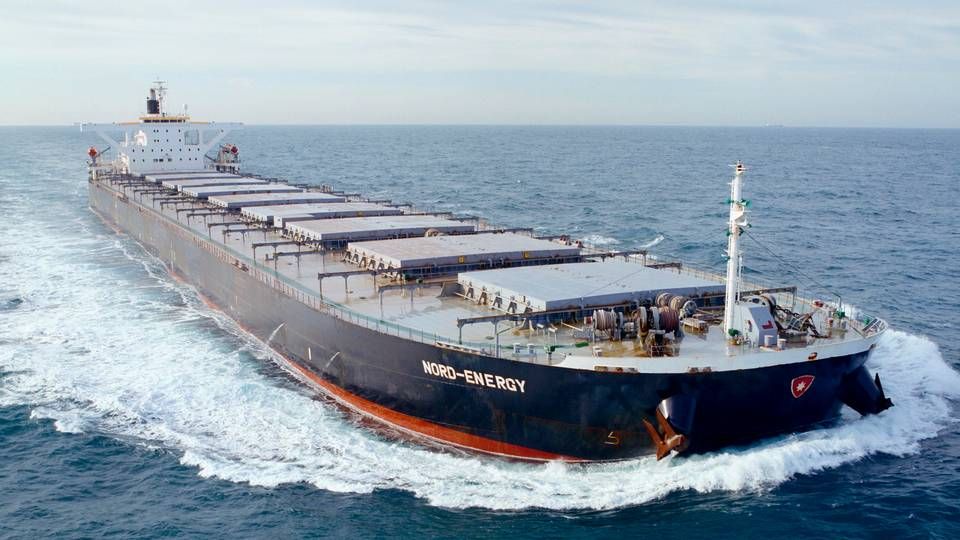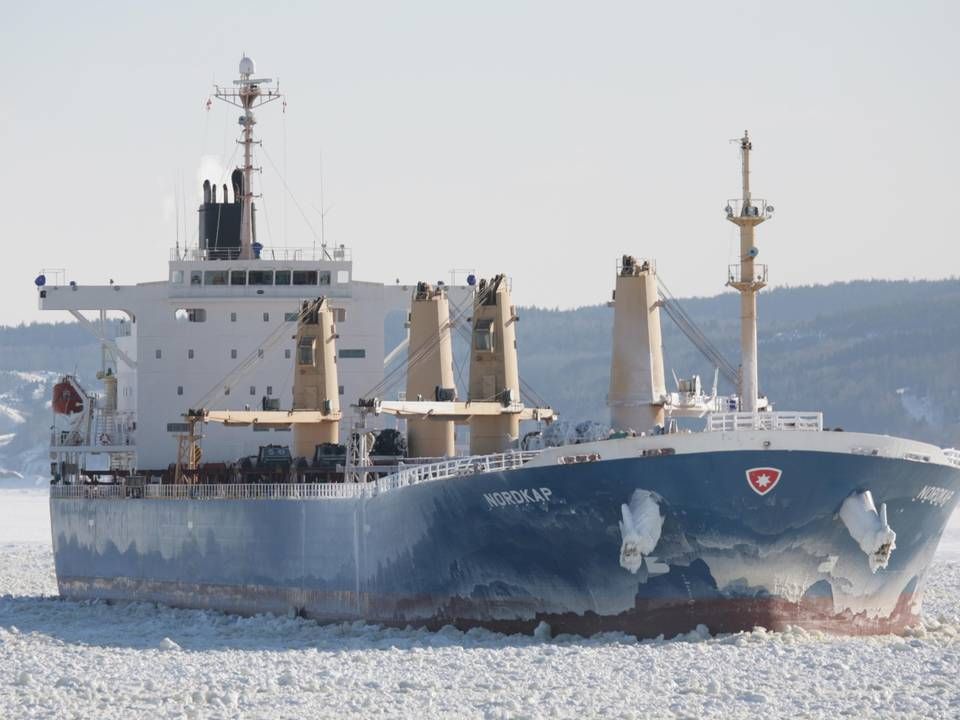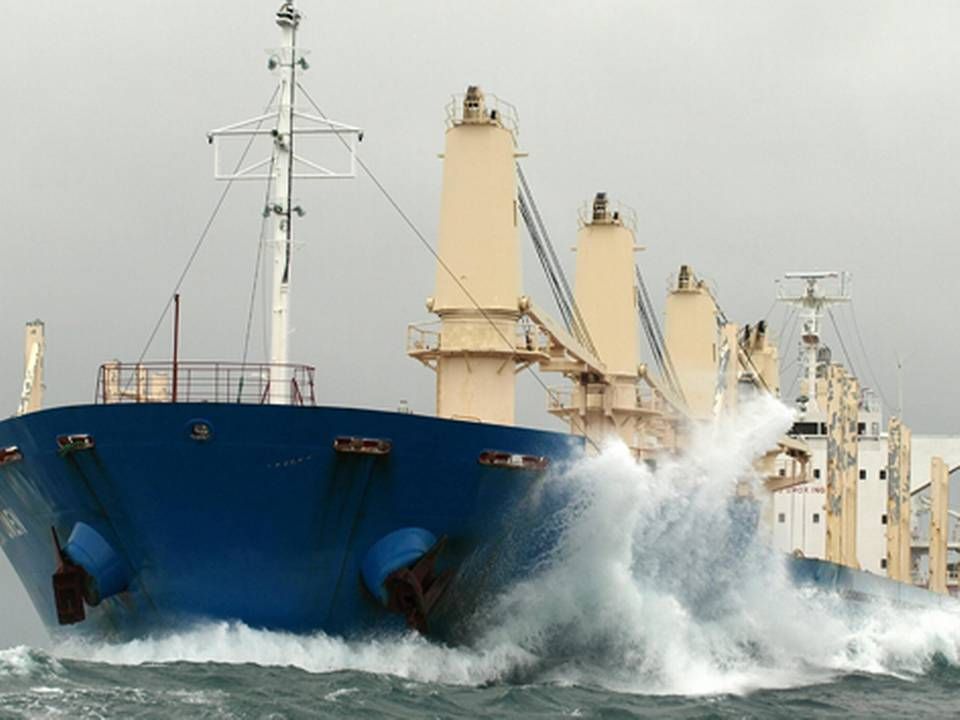Norden hit by Atlantic nightmare

"In hindsight we probably should have been more careful in the 1st and 2nd quarters than we actually were. That's obvious," Norden CEO Carsten Mortensen tells ShippingWatch about the dry bulk carrier's switch to a riskier bet this year on the short-term spot market, instead of covering long-term contracts in light of an expected rebound in 2014.
Carsten Mortensen's admission comes after a disappointing start to 2014, where the financially well-padded carrier looks set to balance on the edge of a deficit for the year as a whole, and now reduces its expected result before impairments and depreciations to between a USD 40 million deficit and a USD 60 million profit.
Traditionally conservative carrier Norden decided in 2013 to "open the books" more toward the risk-fraught spot market in light of an expected market recovery over the next three years.
Norden's dry bulk coverage for the rest of 2014 was at 58 percent by the end of this quarter, corresponding to 14,517 open ship days. The coverage is lowest toward the end of the year, which means that Norden remains well-exposed to the spot market in expectation of an improved 2nd half of the year, says Carsten Mortensen.
According to analyst Fearnley's morning report on Tuesday, activity on the historically well-paid market in the Atlantic - where a great part of Norden's dry bulk fleet is positioned - remains highly restrained, and Norden's interim report points to a veritable Atlantic collapse in the first months of the year, a development that is dragging deep tracks into the 2nd quarter.
Norden suffered USD 48 million deficit
"If there's one thing that's surprised us it's that the Atlantic, especially in the 2nd quarter, is as low as it has been," says Carsten Mortensen, though he remains confident that the market will improve in the second half of the year.
This goes for Norden's asset values especially, which are currently around USD 175 million higher than the book-listed values, though the rising ship prices are also based on expectations for a significantly improved market in 2014.

11 new ships this year
Norden has a comprehensive newbulding program with a total of 37 ships, 11 of which are set for delivery in 2014. According to Carsten Mortensen, the ships have been purchased at a historically low price that would be impossible today, and a majority of them will not be deployed in the market at this time.
"Of course the fact that ship prices are increasing represents a degree of faith in the future. But we have an underlying belief that what we're doing is right. And just last month we paid USD 38 million in returns to our shareholders, just as we're now launching a buy-back program for another USD 10 million," says Carsten Mortensen.
Norden to gear investments in new strategy
Indonesian ban and cold winter in the US
Norden basically attributes the weak market to the Indonesian export ban on unprocessed ore, such as nickel and bauxite, a reduced US coal export due to the cold winter, combined with a warm winter in Europe, which traditionally buys the US coal.
Furthermore, the Colombian coal export was hit by the closure of the country's biggest export port during the 1st quarter, which means that a significant number of Supramax were sailing ballast from the Pacific to the Atlantic. And expectations for record-high grain volumes also influenced the position of tonnage on the Atlantic.
By the end of the quarter, the carrier had liquidity and securities for a total USD 448 million, along with unused credit facilities worth USD 220 million. In comparison, the company has outstanding payments for its newbuilding program totaling USD 437 million, due paid in the period 2014-2017, says Norden in its interim report for the 1st quarter 2014.
"We expect the market to improve, but if the storm keeps raging, we'll be the last tree standing in the woods," says Carsten Mortensen.
Norden's total active fleet, in dry bulk and tanker, stood at 280 vessels by the end of the quarter, slightly less than the 285 ships in the fleet by the end of 2013, a decrease caused by a reduced number of short-term charters in dry bulk.
Weak market forces Norden to downgrade 2014
Norden: We're hit by ten-year low on the Atlantic
Related articles
Weak market forces Norden to downgrade 2014
For subscribers
Norden: We're hit by ten-year low on the Atlantic
For subscribers
Pacific Basin hit by slow 1Q bulk market
For subscribers





















